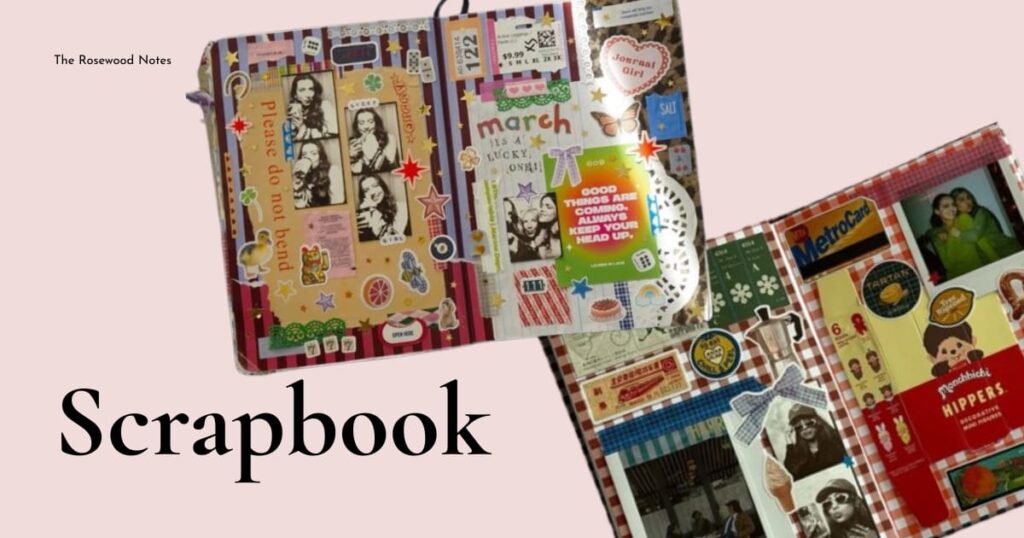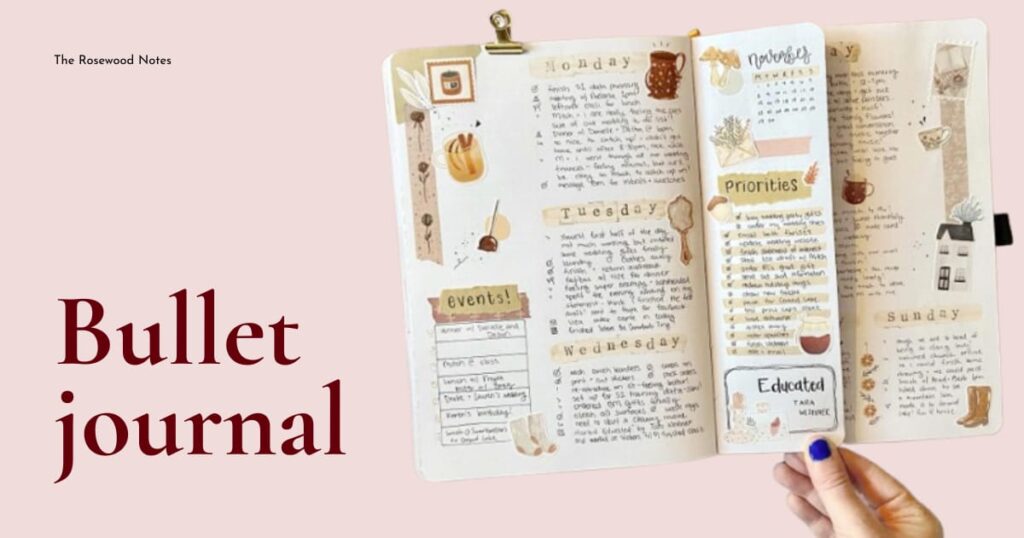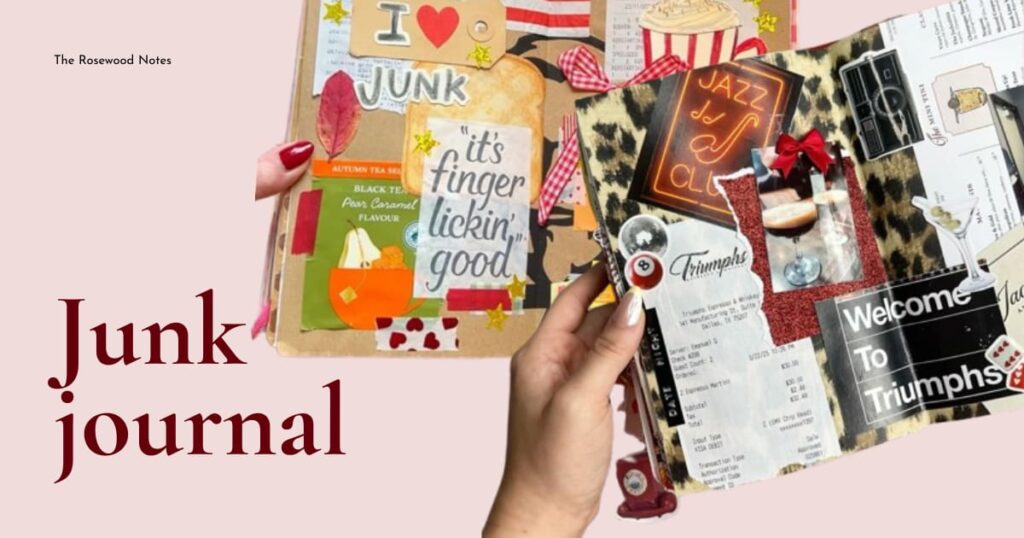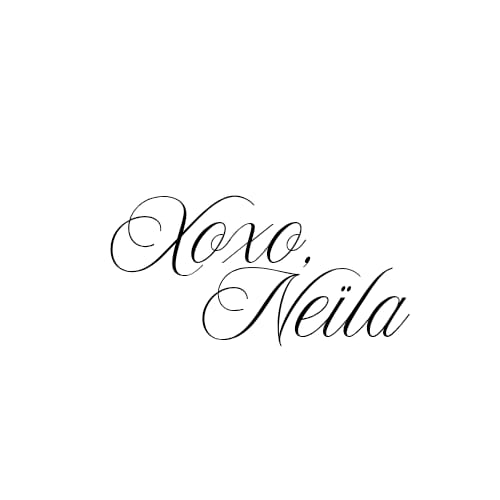We are slowly approaching the end of 2025, and 2026 is just around the corner. The cold season is the perfect time to start journaling, pick up a new hobby, and begin preparing for the year ahead. Writing down your thoughts can help you reflect on the past months, set intentions for the new year, and make this transition feel more intentional and meaningful.
If you’re anything like me, you’ve started a journal ten times and dropped it by week two. Or maybe you want to get into journaling for the first time and have no idea where to start. Don’t fret! Either way, I’ll show you how to easily start journaling this season and make it fun.
What is journaling
Journaling is simply the act of writing down your thoughts, feelings, and experiences. Some people do it daily, some weekly, and some only when inspiration strikes. The point is to create a safe space for self-expression.
What specific benefits can you expect from journaling?
There are several benefits to journaling:
- Process your feelings and get to know yourself better.
Journaling can give you a clearer idea of who you are. Writing often and documenting even simple moments in your life can help you understand what you value, what’s on your mind, and how you perceive the world around you.
- Enhance your creativity.
Journaling is a creative outlet in many ways. You can write about your ideas and thoughts, but it can also include sketches, doodles, or any form of self-expression. Since it’s a personal practice, there are no rules; you can make it whatever you want.
- Serve as a memory keeper.
As a very nostalgic person who doesn’t like taking pictures of myself, I really enjoy reading old entries I wrote years ago. They remind me how I felt at that specific time, what I worried about, and what interested me. It’s incredible to see how much I’ve grown and changed over the years.
Different types of journals
If you want to start journaling, here’s a list of different styles of journals you can choose from
Traditional diary
Source: toridy
This is the classic type of journal you’ve probably seen in movies or read about in books. It’s the one people generally know about. This kind of journal, also known as a diary, is used to jot down events from the day, along with personal thoughts and feelings.
Scrapbook
This type of journal is one of my favourites because it’s much more visual than a traditional diary. You can save photos, receipts, maps, scraps of paper to decorate the background, add stickers, draw, basically do anything you want to tell a story without writing much at all. It’s fun, creative, artsy, and really sparks your imagination.
Bullet journal
Source: life_w_mal
A bullet journal is a type of journal where you can organise your life. You can write your to-do lists, habit trackers, grocery lists—basically anything to keep yourself organised.
Commonplace book
A commonplace book is messier and more random than a bullet journal. It can be used for brain dumps, writing down ideas, or anything you want to remember.
Junk Journal
Source: tamara journals, justinasjournal
A junk journal is similar to a scrapbook, but it’s filled with items that would normally be thrown away. For example, you can add paper bags from shopping trips, scraps, or any other odds and ends.
Digital journal
Source: pinkpetiole, She The Spy
If you don’t want to use pen and paper, you can journal on your phone, tablet, or computer. I started journaling on my tablet because I was worried someone might read what I was writing.
The whatever-you-want journal
This is the type of journal you start without deciding what it has to be. It can be a mix of a traditional diary, scrapbook, bullet journal, or commonplace book. Journaling is more fun when you let it be whatever you want.
When I first started journaling, it was more like a diary. Over time, though, I realised my journal could shift—it’s a scrapbook sometimes, a bullet journal when I need it, and a commonplace book when I just want to dump ideas. It’s really freeing.
How to get started?
The first step is to decide what type of journal to use. How do you do that? It greatly depends on your goal.
Think about why you’re journaling. Is it to track habits, improve mental health, plan your life, or simply create a keepsake? Once you know your ‘why,’ choosing your format becomes easy.
What you need to start
Now that you’ve picked a type of journal, let’s talk supplies.
The most basic thing you need is a pen and a notebook. One of the most popular notebook brands is the LEUCHTTURM1917, but if you want something cheaper, I recommend BUKE notebooks. They’re more budget-friendly, the paper is thicker (160gsm- 180gsm), and that’s something I personally care about. I’ve been using BUKE journals for a year now, and I like how inexpensive they are and how sturdy the paper feels. I also like to use the Sharpie roller 0.5mm pen.
A thicker paper means you can try different mediums (pen, marker, brush pen) without having to worry about leaking or smearing onto the next page. Furthermore, there are a lot of other merchants that sell very aesthetic notebooks if you want something fancier, like Leelajournals, Notebook Therapy, or Mellow Days.
However, you don’t even need to buy an expensive brand notebook. You can simply go to any store, check the stationery aisle, and grab a notebook you like. The same goes for pens; you can choose any style you prefer.
Now that you’ve decided what kind of journal you want and have your pen and notebook, you can begin journaling.
What are some specific journal prompts to get started?
Getting started can feel a bit overwhelming, especially when you’re staring at a blank page. That’s where prompts come in.
What is a prompt?
A prompt is just a topic idea or question you can answer to help to get into writing.
General prompts
- What’s something that made me smile this week?
- What challenge did I overcome recently?
- What is one thing I’m grateful for today?
- Something I learned about myself this month
- A goal you want to focus on.
- What does a perfect day look like to me?
- Me from A to Z
- Your unrealistic Wishlist
- What is my favourite season and why?
- Do I enjoy cooking?
- What cheers me up no matter what?
- Your dopamine menu
- 10 things you like about yourself
Winter-inspired prompts
- My ideal winter self-care day
- What has the weather been like recently?
- What am I looking forward to this winter?
- How can I feel better on dark, cold days?
- Write how to get more vitamin C in your diet.
- Start planning your New Year’s resolutions.
- What is on my winter bucket list?
- List some ways to get more fresh air this season.
- What are some good memories from the past winter?
- Your favourite Christmas songs
End of the year prompts
- Write down your New Year’s resolutions.
- What is something I accomplished during this past year that I’m proud of?
- What are some goals I need to reach next year?
- Start writing out your spring bucket list.
Spring journal prompts
- What are some changes I want to make this season?
- Write down the new habits you want to introduce.
- Draw some pictures in your journal of what spring means to you
- What is my favourite thing about Spring? Why?
- Your spring reading list
How can you maintain a consistent journaling practice?
The best way to start journaling is to schedule a specific time in the day to write. It can be incorporated into your morning routine, during the day, or at night before bed. You don’t have to spend hours writing; five minutes can be enough. You don’t have to write every day, either. Choose what is best for you and stick to it.
What tips do I have for overcoming writer’s block while journaling?
- Start with a sentence like:” Today I feel…’
- Write about not finding anything to write about (I do that very often)
- Write a list (your favourite films, favourite songs, favourite food, etc.)
- Don’t write. Choose one of the prompts above, and just draw your answer!
- …or just don’t write at all. You don’t have to force yourself to write if you don’t want to.
How to make it more enjoyable?
There are multiple styles of notebooks you can choose from, as well as various sizes and paper textures, from lined paper to dotted, to squared, to blank.
If you mainly want to write, I would recommend getting a lined journal. However, if you want more freedom to draw, scrapbook, or do anything more visual and artsy, then a dotted notebook might suit you better, as it provides structure without being restrictive.
You can also add personal touches to your journal to express yourself: stickers, charms, bookmarks, or even decorating the cover. Pictures are another great addition; you can print them from your phone, either at your local library or with a mini photo printer.
Personally, I print mine at the library because it’s cheap and convenient. To make your pages stand out even more, you could add cute background papers. There are tons of free patterns available on Pinterest that you can download and print on regular paper.
In addition, experimenting with different places to journal can make the experience more enjoyable. Try taking it with you on a picnic, to a café, or even to work, if possible. A change in scenery often sparks inspiration and can motivate you to write more.
Wrapping up
So, this is your how-to guide to get you started with journaling.
As we move from the end of 2025 into spring 2026, journaling can be your companion through this seasonal transition. So, grab your pen and notebook; there’s no perfect time to start journaling, and the best moment is now.
’til next time






